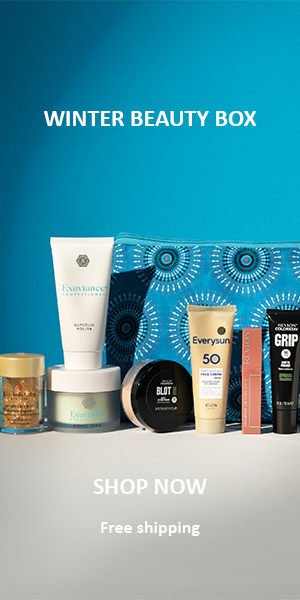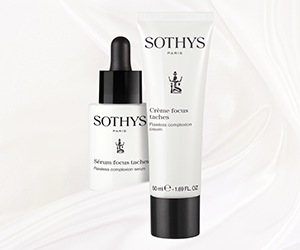
From sun burn, to DNA damage, to blisters, dermatologists see it all, and are often asked what some of the most common skincare misdemeanours are. Without fail, the sun almost always comes up top when a skincare professional lists the things their patients should avoid to enjoy healthier skin.
Despite this, many of us are still guilty of turning a blind eye to the danger of UV rays, and sometimes neglect sun protection guidelines out of ignorance or inconvenience.
Techniblock, a leader in sun protection products, aims to make it easy for all South Africans to use sunscreen with ease and efficacy, in turn lessening the occurrence of sun burns, skin DNA damage and more seriously, the development of skin cancer.
They’ve compiled a list of the seven things your dermatologist wishes you wouldn’t do:
- Save sun protection for the beach
Many of us grew up believing that sunscreen was a product only necessary at the beach and around the swimming pool. Today we know better, but a lot of people still only apply sunscreen when they’re spending prolonged time directly in the sun. Research has proven that in order to protect our skin from harmful UVA and UVB rays, we need to apply sunscreen every day, regardless of the weather. After all, did you know you can still burn on an overcast day?
Take precaution and apply sun protection every day, no matter where you’re headed. You might go for a dark early morning run thinking you don’t need sun protection, but what happens if you run into a friend and end up grabbing a coffee afterwards? If possible, keep a pair of sunglasses and a hat on-hand too, as these offer extra protection when you’re exposed to UV rays. Techniblock SPF 50 Active On The Go (R99.95) comes in a convenient 75ml bottle which can easily fit in a handbag or gym bag, making it the perfect product to keep on-hand – you never know when you may need it!
- Use sunscreen incorrectly
In order to reap the full benefits of your sun protection product, you need to use it correctly. If you choose a cream or lotion formula, that means spreading on at least a shot glass-sized amount to the exposed parts of your body. That’s about 40ml, so if you do the math, a 200ml bottle of sunscreen should disappear within about a weekend. If you enjoy a lotion formula, try Techniblock SPF 50 Body Lotion (R189.00). Water-resistant and non-greasy, it absorbs with ease and leaves skin lightly fragranced (with no greasy residue).
It’s important to reapply sunscreen after every swim, even if it has a water-resistant formula, as well as every couple of hours if you’re spending time outdoors. Take care to apply sunscreen to all exposed areas – even the “obscure” ones like on your ears and between your toes. Aerosol sprays are a convenient alternative to lotions and creams, and make it easier to cover the body without missing any spots. Try Techniblock SPF 50 Wet & Dry Convenience (R189.00), which can be sprayed on wet or dry skin and has a light, non-greasy texture.
- Get a “base tan”
Some people sun tan at the start of summer in order to darken their skin for the season, which they believe will protect them from developing sun burn later on. This is a myth – the truth is that there is no such thing as a healthy tan, and even slight darkening of the skin is an indication that damage has taken place.
Sun exposure accelerates the development of wrinkles, lines and other signs of ageing. In fact, the darkening of skin is a result of the body producing more melanin to protect skin from the sun. Bottom line – if you want a golden glow, stick to a fake tan.
- Run shirtless
Men run shirtless for good reason – it gets hot! But it’s not a smart move in terms of sun exposure. Stripping down robs you of the safeguard of clothing and puts your skin at risk of sun burn and DNA damage. Try to run with shorts and a cool t-shirt or vest instead – it may not offer complete sun protection, but it’s better than full exposure. Plus, did you know that many active wear brands are now manufacturing clothing with built-in sun protection? Look for the term “UPF” on the label.
- Forget about your head and lips
The head and the lips are two of the most overlooked spots on the body when it comes to SPF application. Men with thinning hair or bald spots are at high risk of developing skin cancers and pre-cancerous growths as these commonly first appear on the scalp. Wearing a hat every time you go outside is first prize (applying sunscreen to a bald spot is easy enough, but it becomes trickier when hair is thinning). Because you can’t easily see on top of your head, an aerosol sunscreen is a better alternative to a cream, as it doesn’t leave a white patch when not rubbed in. Try Techniblock SPF 50 300ml (R299.00). It releases an ultra-fine, invisible mist that effectively protects the skin without leaving an oily residue.
The skin on our lips is thin and very prone to sun burn and damage, but because it’s not always pleasant to wear sunscreen on the lips, this area is often neglected. We recommend applying a thin layer of sunscreen on your lips, or alternatively invest in a lip balm with SPF.
- Take sun burn lightly
You wouldn’t take a painful burn from a hot appliance lightly, so you shouldn’t do so with sun burn either. Red, painful skin after a sun burn is a sign that your body’s barrier has been damaged. This means that it cannot function optimally to protect the body from aggressors, making it easier for illness-causing bugs to get through and harder for your body to regulate fluids and temperature. If you feel feverish or have chills, nausea, headache, or other flu-like symptoms after getting a bad burn, seek medical treatment. The same goes for burns that blister and cover large areas of your body, or that don’t get better after a few days of in-home treatment with strategies like cool rinses and pain-relieving medications.
Dermatologists or other doctors can prescribe steroid creams that speed healing. In truly severe cases, you might even require hospitalization to receive intravenous fluids or other burn treatments.
7. Pop blisters incorrectly
The temptation to leave a blister alone is sometimes too great, but if you pop it incorrectly, you increase your risk of developing an infection. If you’re going to attend to it, do so safely. Wash your hands thoroughly before you start and dip a needle in alcohol to disinfect it.
Poke a hole in the blister and drain the fluid out, but don’t disturb the dead skin on the top of the blister any further. As tempting as it is to pull that off, it’s a biological dressing covering the healing skin underneath. Once you’re done, wash the affected area and cover it with petroleum jelly and a bandage.
Taking extra care during sun exposure won’t just protect you from the immediate risk of sun burn, but it will also serve you in the long-term, delaying the formation of the signs of ageing and lowering your risk of developing skin cancer. Follow these simple steps and enjoy a healthier and more youthful-looking skin for longer.





